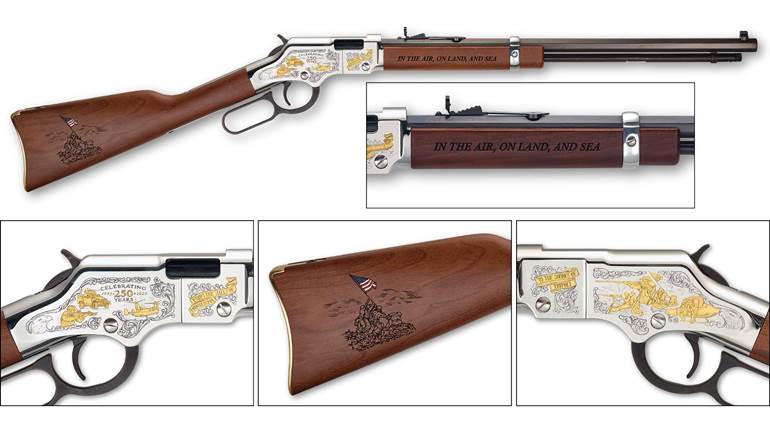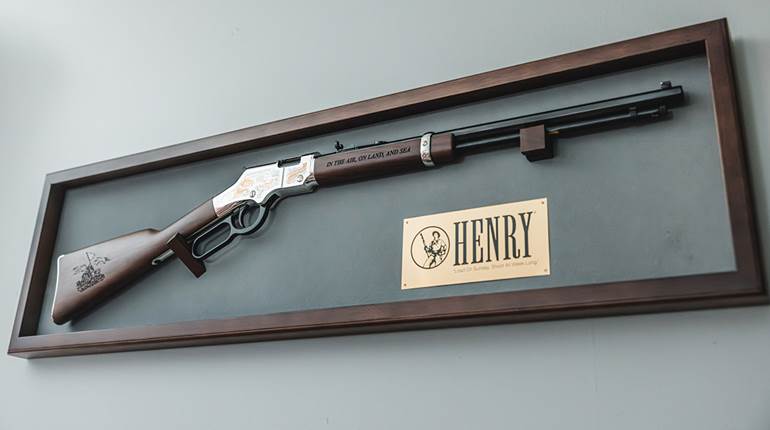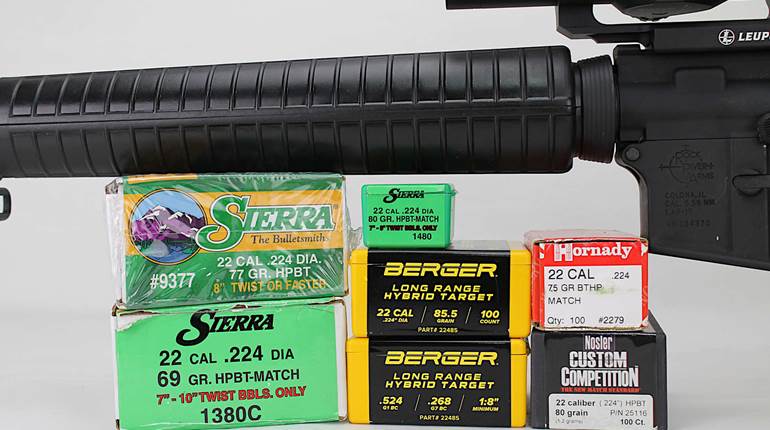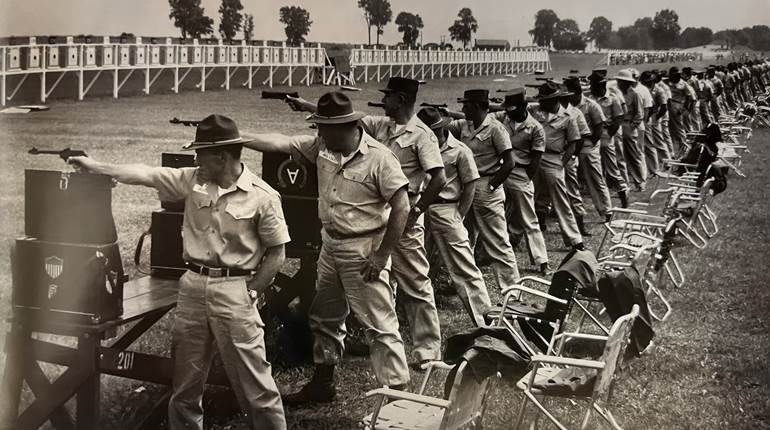
The U.S. Marine Corps prides itself on its marksmanship, and now Marine infantrymen will be able to put more accurate fire on our nation’s enemies—with a little help from Leupold. The Marines just adopted the Leupold Mark 4 MR/T to top its Designated Marksman Rifles (DMRs), and the combination of the HK416-based M27 Infantry Automatic Rifle (IAR) with Leupold TS-30A2 Mark 4 MR/Ts riflescope will now be called the M38. 
“The TS-30A2 Mark 4 is the perfect optic for those looking to deliver fast, precise rifle fire,” said Sam Horstman, director of military sales for Leupold & Stevens, Inc. “Further, like all Leupold optics, it’s been strenuously tested for durability, and fully meets the rugged standards set by the Marine Corps.”
The Marines are fielding the first M38s—an M27 topped with a 2.5-8X 36 mm Leupold TS-30A2 Mark 4 MR/T riflescope—as the photos from Camp Lejeune in December show. The configuration is to be known as the M38 Squad-Designated Marksman Rifle. The TS-30A2 Mark 4 MR/T has previously been fielded with the Mk 12 Special Purpose Rifle.
Marines with 3rd Battalion 8th Marine Regiment fire the M38 Squad Designated Marksmanship Rifle during a live-fire weapons exercise at range F-18 on Camp Lejeune, N.C., Dec. 8, 2017. Photos by LCpl Michaela R. Gregory.
“We pride ourselves on building optics that deliver elite optical performance and unparalleled reliability,” Bruce Pettet, president and chief executive officer for Leupold & Stevens, Inc., said. “We’re ecstatic that the Marine Corps selected the TS-30A2 Mark 4 MR/T. The men and women of the U.S. armed forces deserve the very best, and we’re proud to deliver it.”
The M27 is chambered, of course, in 5.56x45 mm NATO, and it is built on an HK416, fires from a closed bolt and uses the German maker’s gas-piston system operation. For reason known only to the Marine Corps, they call it the “pusher” system (see below). The M27 was intended to replace the M249 Squad Automatic Weapon (SAW), the open-bolt, belt-fed 5.56 mm light machine gun of the U.S. military. The Marines adopted the IAR in 2011 after extensive testing. There were other contenders for the IAR, including FN HAMR that used a hybrid closed/open bolt design that included a heat sensor that would activate after the gun heated up, switching to open-bolt operation. To prevent cook offs when firing from a closed bolt, a heat sensitive tab would pop the gun over to open bolt operation as the temperature rose, much like a Perdue oven stuffer roaster.
USMC M27 IAR: DoD image
Most Marines have the "Squad Day Optic" on their M27s. It is a 3.5X version of the Trijicon ACOG topped by an RMR reflex sight for close-in work. U.S. DoD photo by Lance Cpl. Scott W. Whiting
At a glance, the M27 IAR looks very much like the M4s and M16s carried by other members of the fire team. The Marines found SAW gunners on the battlefield were being targeted specifically by our enemies. And the M27 is far handier when it comes to urban operations. Watching an M249 gunner go up multiple flights of stairs and cover his sector with nearly 24 lbs. of machine gun was painful to watch, let alone for the young marine to actually perform. Too, the Marines found that, with the M27, more precise aimed rather than suppressive fire could give them the edge in a firefight. The M249 didn’t go away, it was just pulled out of Marine infantry squads and assigned at the company level. And the Marines like the M27 IAR, and plans are afoot to equip frontline Marines with the gun to the tune of up to 50,000 guns. 
A Marine with the 26th Marine Expeditionary Unit fires an M27. U.S. DoD photo by Cpl. Michael Lockett
For most Marine riflemen, the M27 is fitted with a Trijicon TA11 Squad Day Optic (SDO), which is a 3.5X ACOG combined with and RMR for close in targets. Instead of nearly replacing the SAW in the infantry squad, the Marines found that the 16.5”-barreled M27 could also be used as a Designated Marksman Rifle, and that’s where the new Leupold comes into use. At the time, most Marines were using the 14.5” barrel M4. The 2.5X-8X riflescopes and longer barrels allow Marines to extend the range on the battlefield. The Marines might not have a Gold Ring on the outside, but inside, these are scopes generations of hunters have trusted. No doubt the Marines will too.
Here is how the Marine Corps “Squad Weapons B2E2657 Student Handbook” (which explains small arms to officer candidates) describes the M27:
“The M27 is an Automatic Rifle and it sets the conditions for small unit movement in a completely different manner than its predecessor, the M-249 Squad Automatic Weapon. … The M27 Infantry Automatic Rifle (IAR) is a lightweight, air- cooled, pusher rod gas operated, magazine fed, shoulder fired weapon. It operates in semi-automatic and automatic modes of fire. This allows the user to engage with precision, and switch to suppressive fire, or vice versa, as needed. Compared to the M249, the reduction in weight allows the user to be more agile in today’s aggressive fight. The IAR’s pusher rod gas system directs 95% of propellant gases and fouling out of the muzzle, allowing the weapon to remain virtually carbon free for hundreds of rounds. Built with a Free Floating Rail System there is no contact between the barrel and Rail system except for at the base of the receiver.”






































